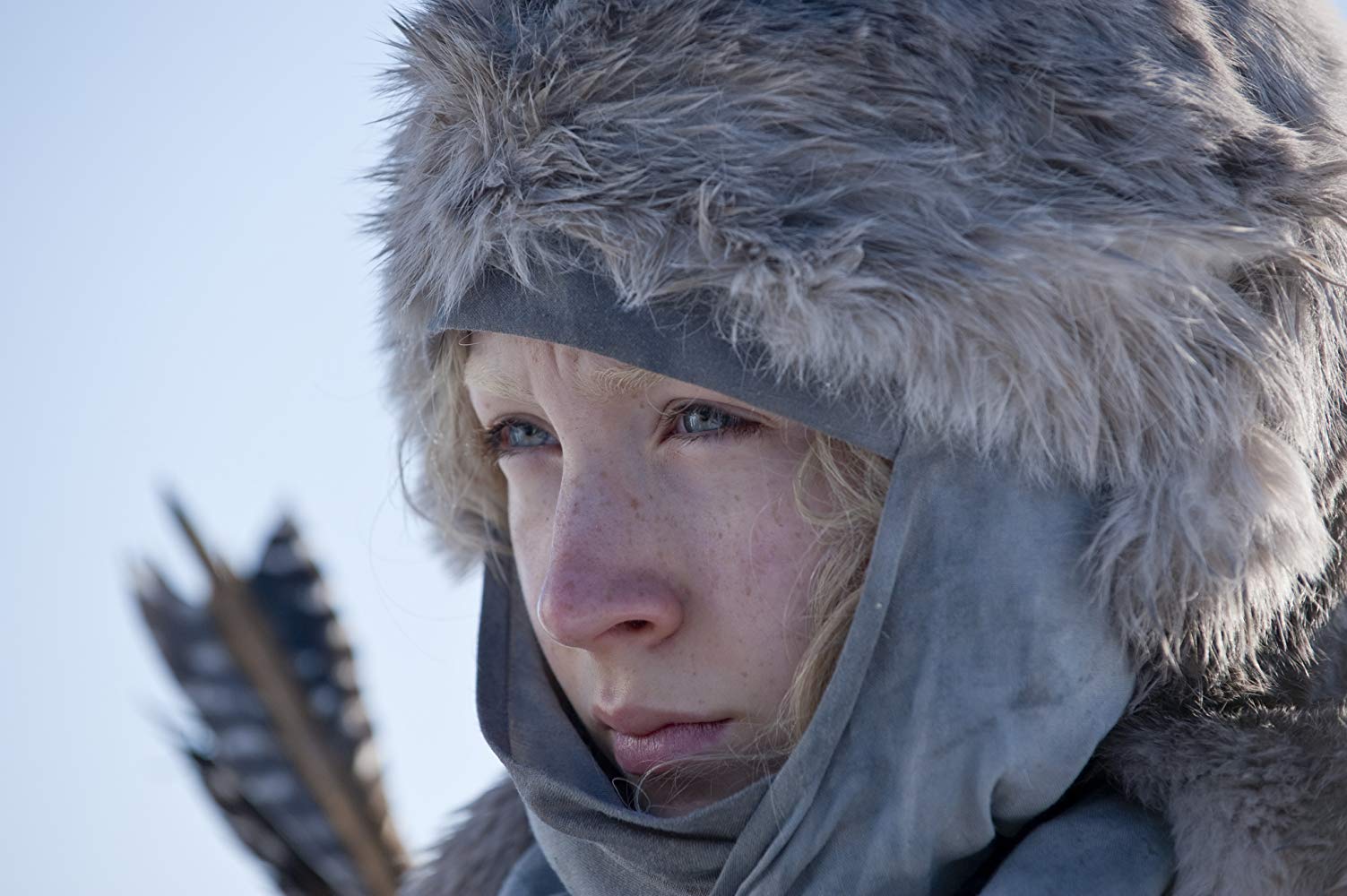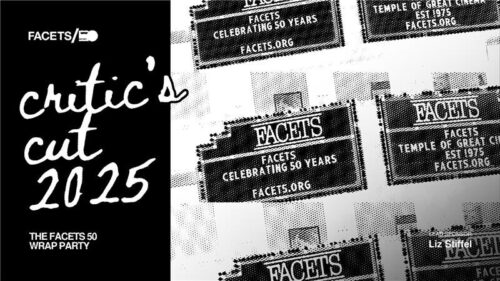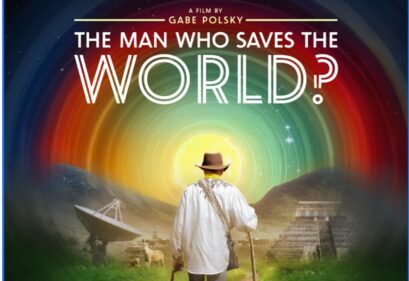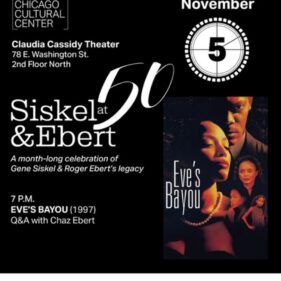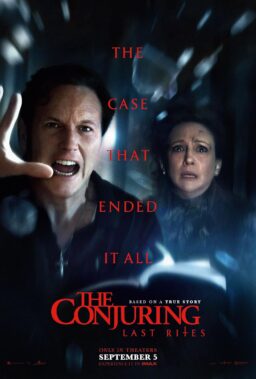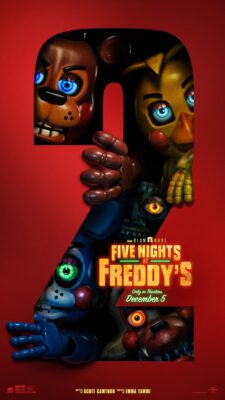In her seminal collection of reinvented fairy tales, The Bloody Chamber, Angela Carter twice imagines the story of Little Red Riding Hood. In “The Werewolf,” the Big Bad Wolf doesn’t eat poor sick Granny—she is poor sick Granny, a lycanthrope in a dressing gown. Little Red is armed with her father’s hunting knife, and she makes quick work of the werewolf, lopping off a paw and forcing the monster from the house. The story ends with a stunner of a line that is both chilling and victorious: “Now the child lived in her grandmother’s house; she prospered.” The next tale, “The Company of Wolves,” starts with a more conventional Red Riding Hood—that flaxen-haired naïf with her tantalizingly ripening body, confronting the bestial need of the Big Bad Wolf—until the very end: “The girl burst out laughing; she knew she was nobody’s meat … she will lay his fearful head on her lap and she will pick out the lice from his pelt and perhaps she will put the lice in her mouth and eat them … sweet and sound she sleeps in granny’s bed, between the paws of the tender wolf.”
Carter strips the menace inherent in the Red Riding Hood story away from the wolf, the typically masculinized figure of raw violence and desire, and vests it into the girl: She becomes the hunter, slaying with a blade, subduing the wooly darkness of the world with a laugh—and the force of will behind it. It’s fitting then that the climax of the 2011 Joe Wright film “Hanna” (written by Seth Lochhead and David Farr) should occur at Spreepark, a fairy tale theme park with an attraction shaped like a giant wolf’s head, its mouth opened wide in an expression that is both menace and smile. “Hanna” follows Saoirse Ronan’s genetically-advanced teenaged super-assassin on her quest for independence, from her father and, more pressingly, the CIA program that created the elite super-assassins—a quest that will lead her to a stand-off with Marissa (Cate Blanchett), the alluringly nefarious leader of that program, the woman who has killed and tortured so many people that it’s become as casual as blotting her bright red lipstick. Marissa stands in the center of the wolf’s jaws—she is not as physically powerful as Hanna, but she doesn’t have to be: She is the wolf in high heels and a skirt suit, the wicked grandmother who licks her chops and coos the better to eat you with at the young girl-meat in front of her. Hanna is both versions of Little Red, the sly hunter and the emboldened waif—the girl who stands in front of the wolf and laughs I think not. She has sharp teeth of her own.

Now that women’s rage is all the rage, “Hanna” is enjoying something of a small cultural renaissance, with Amazon studios soon debuting (March 29) a series that seems to expand on the film’s general premise: One of the CIA higher-ups, Erik Heller (Eric Bana, in the film) grows a conscience and tries to rescue one of the women and her baby. Marissa kills the woman, but Erik flees into the distant Arctic to raise the baby as his daughter and train her in the fine arts of combat and ruthless self-defense. He isolates them so thoroughly that even the idea of music is foreign to her—he must take out a textbook and explain it with a scholarly air. She thrums with the usual aches of youth, to explore the world beyond their snug little cabin and forge her place in it—but she must first bring the fight to Marissa and claim victory before she can ever be free. She must step inside grandmother’s house and face the beast within.
<span class="s1" <the="" movie="" has="" a="" clear="" spiritual="" kinship="" with="" works="" like="" “Hanna” has echoes of “Buffy the Vampire Slayer,” “La Femme Nikita,” and “Kill Bill”—and not just in the ways it offers the thrill of watching a woman exude a neck-snapping, bone-pulping physical power against wicked people (though, admittedly, seeing Hanna steal a skinhead’s knife from him and slash his chest with it is viscerally satisfying). Like its foremothers, “Hanna” does more than simply exalt in its heroine’s ability to do horrific violence against the baddies who deserve it; it interrogates what committing that violence does to her. Just as Buffy (at least, the TV version) must accept that “death is her gift” and that the righteousness of her mission as Slayer will all-too-often eclipse the fairness of having a choice in who she becomes; just as Nikita must realize that cunning and agility can’t redeem the pain of a blighted past; and just as Beatrix Kiddo must choose between the hellfire freedom of life on the edge of a Hanzo blade and the more constrained, though maybe more meaningful, life as “Mommy”—Hanna must learn that fully accessing her power and her potential means forsaking the comfort and security of her girlhood home. She must learn that there are so many ways to be ready for the world (most of which don’t involve knife-fighting or taking down commandos). The movie allows Hanna to marvel over exotically-spiced foods, a flickering television, and the softness of another girl’s skin in the same way that the viewer marvels over her ability to take down men three times her size. But, by the final frame, it leaves her totally alone, a strange girl in a strange land (if anything, it’s a pity that the Amazon show doesn’t seem like it will pick up directly where the movie ends).

When it was initially released, the film enjoyed relative success, roughly doubling its budget at the box office and earning accolades for Ronan’s performance—which remains, on multiple viewings, remarkable: Her Hanna is like some carnivorous flower, a taut bud that opens with child-like incredulity and wonderment, then snaps shut around its prey and squeezes the life out of it in one deft motion. Her kaleidoscopic physicality is most vividly displayed in the film’s central action piece, when Hanna, who has allowed herself to be captured so she can get to Marissa, escapes the labyrinthian underground bunker and laboratory: Ronan evinces a martial ferocity as she dispatches a squad of soldiers bare-handed and then uses one of the fallen men’s Vektor SP-1 pistols to open a one woman firing squad on the reinforcements—the sequence feels like a precursor to the artful ultraviolence we’ve seen in Charlize Theron’s nascent career as an action heroine.
Yet, for the most part, “Hanna” hasn’t been truly discussed with the same respect and intensity as the other Strong Female Protagonist™ fare that has followed it—just one year later, “The Hunger Games” debuted, and another formidable teenage hunter dominated our cultural dialogue about femininity, strength, and valor. Hanna has been eclipsed by Katniss Everdeen, Imperator Furiosa, Wonder Woman, Arya Stark, and soon enough, Captain Marvel—worthy and important heroines, all of them; none of them, however, belonging to a world that feels quite as singular, or incandescently weird, as Hanna’s. The movie fuses standard action tropes with Angela Carter’s sultry spookiness to create something truly unique. Though “Mad Max: Fury Road” certainly rivals “Hanna” in wild and gorgeous singularity, its heroines—like those other, more traditional save-the-world heroines—are fighting to save their lives and to thwart the oppressors. Even eight years later, “Hanna” seems so novel because its heroine doesn’t need a noble aim. Or, rather, her life is her noble aim.

Erik may have successfully hidden them away, but he has kept, like a bread crumb in a fairy tale or a pomegranate seed in that dread myth, a beacon that will alert Marissa to their location. He gives Hanna the choice to activate that beacon, and she does. She fights because she’s a girl who may love her father, but who knows that there is a world, a life, for her outside of their small scrap of land. Often, the Strong Female Protagonist has her heroic journey forced upon her when she’s conscripted into the gladiatorial arena; begged to liberate the Immortan’s enslaved sister-wives; destined by fate to take on the God of War; determined to avenge her murdered family; and given great powers and great responsibilities by an intergalactic accident. Hanna makes the hard, yet exuberant, choice to enter the world. Like Little Red Riding Hood before her, she willingly steps into the dark and twisty woods, knowing that there be wolves in the underbrush.
Marissa is, in some ways, a classic baddie (she is, after all, the head of a shadowy government cabal), but she is also a mirror inverse of who Hanna could be in that world—a person who uses her power to amass more power, to stay forever hungry and gnashing for it, to feed on the necks of anyone she can. As they stare each other down in the tunnel, Hanna has a life-defining choice: She can become the girl who sleeps between the wolf’s paws, who picks the lice off its pelt and eats it—to align with Marissa and become what she was genetically bred to be, a stone-souled killed. Or, she can become the girl who takes her hunter’s knife and draws the wolf’s blood, drives it out to its doom. “I don’t want to hurt anyone anymore,” Hanna says. She’s made her choice. She’s ready. She’s got an arrowhead and a make-shift sling. She faces the woman in the wolf’s jaws and she fires. Now, the child breaks down her grandmother’s house; she prospers.
